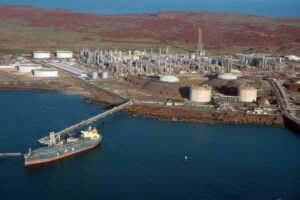The Minerals Council of Australia has entered the world of make-believe with its new “analysis” of energy costs in Australia – but at least it has found a novel way to make new coal generators look cheap.
First of all, you halve the estimated cost of coal generation, double the cost of wind and solar, and then add absurd levels of “back-up” that do not apply to the fossil fuel generators – whose output continually went missing at crucial times in last summer’s heatwaves.
The MCA analysis, published prominently in the fossil fuel industry’s daily newsletter on Monday, is designed to underpin support for a new coal-fired generator to be built in Australia.
Many conservatives are pushing hard for it: One has been promised by the Queensland LNP within 100 days should it win next year’s state poll,; it has been pursued with vigour by former PM Tony Abbott, Resources minister Matt Canavan and others; and prime minister Malcolm Turnbull has been forced to say he “would like to see” one.
But the MCA analysis is based on pure fantasy – using figures for wind and solar that bear no semblance to reality.
For a start, it doubles the cost of wind and solar. Solar, it says, costs between $90-$171 per megawatt-hour, when the actual rate in Australia is around $70/MWh. Even the Finkel Review put it at less than $100/MWh, and a new solar plant is being built in Queensland at less than half the capital cost estimated by Finkel.
Wind, says the MCA, costs between $64-$115 per MWh. Clearly, they haven’t been reading much of late. The Stockyard Hill wind farm – the biggest in Australia – is being built at a cost of less than $55/MWh.
The MCA also gets its capacity factors wrong, estimating 20 per cent for solar when most plants being built in Queensland – with single axis tracking – are looking at more than 30 per cent. Most new wind farms are well above 40 per cent, compared to the 37 per cent used by MCA.
Then the MCA loads absurd amounts of “back-up” and storage on to the cost of wind and solar, suggesting that new wind and solar farms need to be able to run 24 hours a day for two to three days at a time.
Under this scenario, it says, the cost jumps to between $211 and $693/MWh – or more than eight times what the MCA says is the cost of black coal, itself about 50 per cent cheaper than modelled in the Finkel Review.
It even suggests that a 650MW wind or solar plant with three days “dispatchable” power would cost $27 billion.
It is nonsense and fantasy of the highest order. No such reliability measures are imposed on coal and gas plants which, as NSW energy minister Don Harwin pointed out last week, failed at critical moments in last summer’s heat-wave. “Clean energy performed as forecast. Thermal generation did not,” Harwin said.
It also flies in the face of any sensible appraisal of how an energy market works. The CSIRO has estimated that anything below 40 per cent penetration of wind and solar should be considered “trivial” because of the sheer scale of back-up capacity built for the coal-based grid.
These estimates have been repeated in numerous other studies. At no point will a wind and solar farm need to have “back up for three days” – the CSIRO study suggests only five hours of storage might be needed for up to 80 per cent renewables.
“While variable renewable generation creates a need for additional battery storage it may not necessarily be installed via a formula relating to installed capacity. Rather the total battery requirement more strongly relates to being able to meet average state load for an increasing number of hours.”
This and other analysis also makes the point that long-term storage will not be provided by battery storage – which is cheapest for short-term periods and can react quickly to grid problems – but by other longer-term storage solutions, like pumped hydro or solar thermal.
Harwin, for instance, suggests that Snowy 2.0 will provide back-up capacity for 5GW of new wind and solar. Even if the current estimates of Snowy 2.0 were doubled or even trebled from the current $2 billion, it would still come in at a fraction of the $22 billion estimated by the MCA.
Andrew Blakers, from the ANU, and the author of a study focusing on pumped hydro, says the add-on cost to convert variable wind and PV to have the same reliability as current fossil fuel system is around $25/MWh.
“Thus the all-in cost of a reliable 100% renewables grid is around $90/MWh. This is likely to be $75 by early 2020s as PV and wind head towards $50/MWh,” Blakers said. “(The MCA) numbers are fanciful.”
Let’s just remind ourselves of what the Finkel Review said. Wind and solar were well cheaper than coal, and even with firming capacity, were still way cheaper than gas, and about the same price as coal plants, if the cost of environmental impacts were completely ignored.
Even AGL admitted that the combined costs of wind and solar and battery storage meant that only renewable would be the source of any new “baseload” – we think it meant dispatchable power – and the market would switch from existing coal to renewables, without going through gas or new coal plants.
A subsequent analysis by Bloomberg New Energy Finance, using more contemporary costings, showed an even starker difference, with the price of wind and solar competing with even refurbished existing coal generators within a few years.
“Coal’s competitive advantage is fast evaporating. It cannot compete with renewables on cost, and storage and smart management of the grid have made the need for new baseload redundant,” senior analyst Kobad Bhavnagri said. “Coal is yesterday’s technology.”









